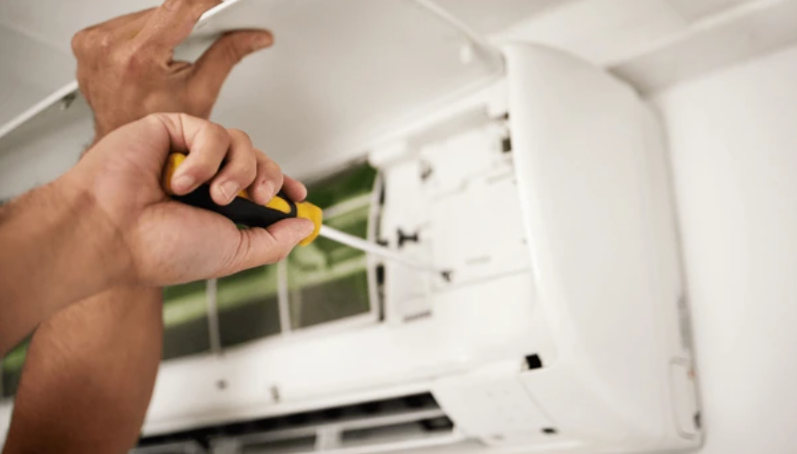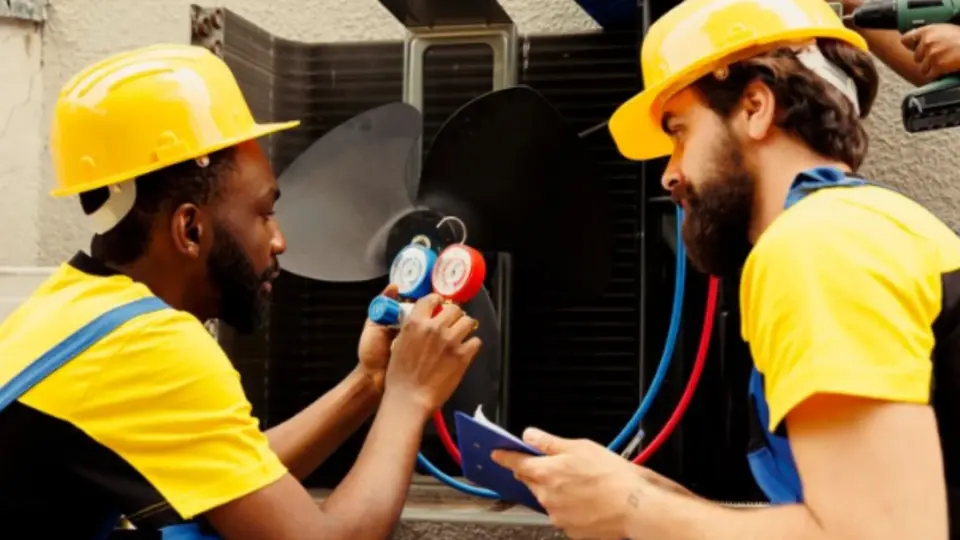For decades, homeowners and property managers have operated under a simple rule: when your HVAC system gets old, inefficient, or breaks down, you replace it. Easy, right? But in recent years, something fascinating has started happening in the cooling industry—contractors are moving away from the full-system replacement model that once defined their business.
The shift isn’t just about technology—it’s about strategy, sustainability, and a new way of looking at cooling solutions. While traditional HVAC replacements are still necessary in some situations, more contractors are advocating for modular upgrades, targeted repairs, energy-smart retrofits, and even hybrid systems as alternatives. What once was a cut-and-dry sale has now become a nuanced service approach.
Let’s explore what’s driving this change, what it means for the HVAC industry, what options are replacing full-system swaps, and how all of this will affect your wallet and comfort in the long run.
What are the Main Reasons Cooling Contractors are Moving Away From Traditional HVAC Replacements?
The short answer? Customer demand, energy regulations, and smarter technology. Traditional HVAC replacement—swapping out a whole central system—used to be a standard fix. But today, it often feels too expensive, too invasive, and too rigid for modern homeowners looking for flexibility and sustainability.
Contractors are responding to a changing landscape—and to clients who are better informed, more environmentally conscious, and more cost-aware than ever before.
Key reasons driving the shift:
- Skyrocketing equipment and installation costs
Full replacements can cost thousands of dollars upfront. Many customers are hesitant to invest so heavily, especially when they’re only experiencing partial failure (like a broken condenser or compressor). - Component-based failures
It’s becoming more common to replace individual parts—like variable-speed motors or air handlers—rather than the whole system, thanks to advances in modular HVAC design. - Rising focus on energy efficiency
Contractors are now offering energy audits and recommending retrofits, insulation upgrades, or smart thermostats before suggesting full HVAC replacements. - Increased regulatory pressure
Changes in refrigerant rules (like the phasing out of R-22 and now R-410A) are pushing contractors to suggest sustainable alternatives that don’t always involve system replacement. - Shift toward decarbonization
Homeowners want cleaner, greener options—like ductless mini-splits, heat pumps, and zoned cooling. Full replacements with traditional forced-air systems aren’t always aligned with these goals. - Labor shortages and supply chain delays
Contractors are dealing with longer lead times on equipment. Modular repairs or phased upgrades allow faster service and greater flexibility.
Contractors aren’t giving up on HVAC—they’re evolving. And what that means for customers is more choice, more control, and, often, more savings.
How is the HVAC Industry Adapting to New Cooling Technologies?
The HVAC industry has historically been slow to change—but the last decade has brought a wave of innovation that’s impossible to ignore. Between smarter controls, cleaner energy integration, and equipment miniaturization, the cooling landscape is transforming.
Cooling contractors are learning to install, service, and promote more adaptable systems. This means expanding their skills beyond forced-air systems and embracing tech that was once considered “niche.”
Emerging trends in HVAC technology:
- Ductless Mini-Split Systems
Perfect for homes without ductwork or for room-by-room cooling, these systems offer flexibility and high energy efficiency. They’re particularly popular in retrofits and additions. - Variable Refrigerant Flow (VRF) Systems
Previously reserved for commercial buildings, VRF systems are entering the residential market, allowing precise zoning and simultaneous heating and cooling. - Heat Pumps as Dual-Season Systems
Heat pumps are now capable of providing efficient cooling and heating—even in colder climates—making them a practical alternative to traditional HVAC setups. - Smart HVAC Integration
Smart thermostats, Wi-Fi-connected systems, and app-controlled zoning allow users to fine-tune comfort and cut down on waste, without changing the whole system. - Geothermal and Solar-Ready HVAC
Contractors are incorporating geothermal cooling loops and photovoltaic-powered components to align with sustainability goals and new home efficiency standards. - Inverter Technology
Instead of starting and stopping like traditional compressors, inverter-based systems modulate cooling levels, reducing wear, improving performance, and saving energy.
The tools are evolving, and so is the technician. Today’s HVAC pro is as much an energy strategist as they are a mechanical installer.
What Alternatives are Contractors Offering Instead of Full HVAC System Replacements?
Full-system replacements are still necessary in extreme cases—when the equipment is far beyond its lifespan, catastrophically damaged, or incompatible with modern components. But increasingly, contractors are offering smarter alternatives that address specific concerns without gutting the entire system.
Common alternatives gaining traction:
- Targeted Component Replacement
Instead of ripping out the whole system, contractors may replace worn parts—like compressors, evaporator coils, or motors—while keeping compatible components intact. - System Retrofits
Upgrading blowers, thermostats, and duct sealing can drastically improve performance and efficiency—sometimes negating the need for a new unit. - Zoned Cooling Additions
Rather than installing a new central system, contractors may recommend adding zoned ductless units to handle hotspots or additions. - Supplemental Heat Pumps
In many cases, adding a heat pump can reduce strain on older systems and lower energy costs—especially during shoulder seasons. - Preventive Maintenance Plans with Data Tracking
Smart sensors and regular tune-ups help catch issues early, allowing homeowners to stretch their system’s lifespan safely. - Energy Audits + Building Envelope Improvements
Sometimes the problem isn’t your HVAC—it’s your home. Better insulation, window upgrades, and attic sealing can reduce cooling loads enough to make replacement unnecessary.
These options give homeowners gradual upgrade paths, which are especially appealing when budgets are tight or environmental goals are top of mind.
How Does This Shift Impact the Long-Term Cost of Cooling System Upgrades?
On the surface, avoiding a full replacement might seem like a way to kick the financial can down the road. But in practice, this strategy can actually result in lower lifetime costs, provided it’s executed wisely.
When contractors approach cooling from a systems-thinking perspective—looking at the whole home, the usage habits, and the energy footprint—they’re able to guide clients to smarter spending.
Long-term financial implications of this shift:
- Lower Upfront Costs
Replacing a single component or adding a zoned unit is far cheaper than installing an entirely new system. - Efficiency Gains Without Total Overhaul
Strategic upgrades (like variable-speed motors or inverter tech) can drastically cut energy bills, even when integrated into older systems. - Avoidance of Redundant Equipment
Installing a full system when only part of it is failing may lead to wasted resources and mismatched performance. Targeted upgrades ensure money is spent where it’s needed most. - Extended System Lifespan
With good maintenance and upgrades, some HVAC systems can last well beyond the standard 15-20 years. - Eligibility for Rebates and Tax Credits
Many utility companies and governments now offer rebates for heat pumps, mini-splits, or efficiency upgrades—making partial replacements more attractive financially. - Resale Value Through Modernization
Adding visible energy-smart systems (like ductless units or smart thermostats) can boost home value without a total HVAC remodel.
Ultimately, the shift in strategy is about working smarter, not harder—and helping customers make upgrades that reflect their needs today without locking them into outdated models of consumption.
The Future of Cooling is Modular, Efficient, and Smart
Gone are the days when HVAC contractors just tore out the old and plugged in the new. Today’s cooling experts are strategic consultants, helping homeowners navigate a world of options that are more flexible, energy-conscious, and financially savvy than ever before.
This doesn’t mean traditional replacements are obsolete—but they’re no longer the default. Whether it’s through smart retrofits, component swaps, or hybrid installations, the goal is the same: comfort, efficiency, and long-term value.
So the next time your AC shows signs of wear, don’t assume it’s time to toss the whole system. Call a contractor who understands the modern approach—because the best solution might not be replacement at all.
Looking for Smarter Cooling Solutions?
At Elite Air & Heat, we specialize in adaptive cooling strategies that prioritize your comfort, budget, and energy efficiency. Whether you’re considering an upgrade, retrofit, or alternative to traditional HVAC, our team can help you find the right solution for your space.
Contact us today for a consultation and discover how modern cooling doesn’t always mean starting from scratch.





